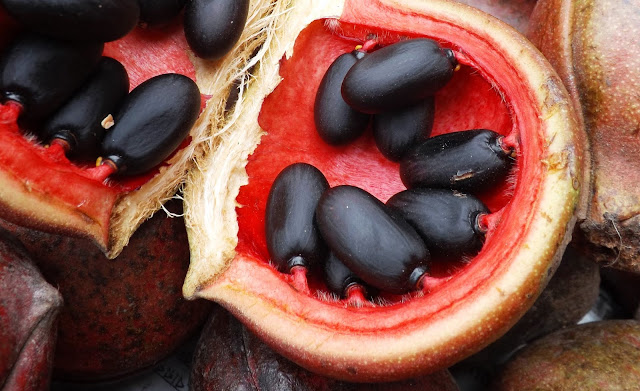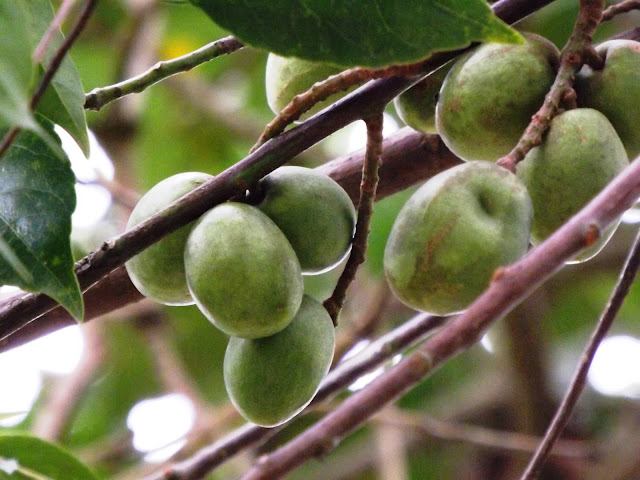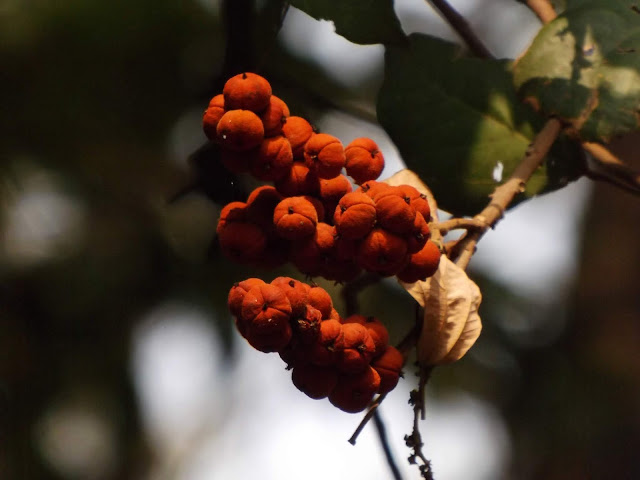Jongli badam or Bastard poon tree, Sterculia foetida

Jongli badam or Bastard poon tree ( Sterculia foetida , family: Sterculuaceae) is a large deciduous tree, up to 20 m in height, with branches arranged in whorls and spreading horizontally. Trunk is robust and straight. There are eye-like glands on the grey-colored bark. The tree has some resembles with Shimul . The children are in the womb! Leaves are digitately compound, leaflets 5-8, crowded at the end of branches, elliptic-lanceolate, tip elongated, acuminate, 10-18 cm long and 4-5 cm wide, petiole is very long, about 20 cm, though the length of leaflets are very short, almost sessile. Flowers are red-yellow or light purple, borne on a axillary panicles. Sepals 5. Flowers bloom is the end of winter or in spring. Although the flowers are beautiful but those have a very unpleasant odour. For this reason, the species have been named foetida


